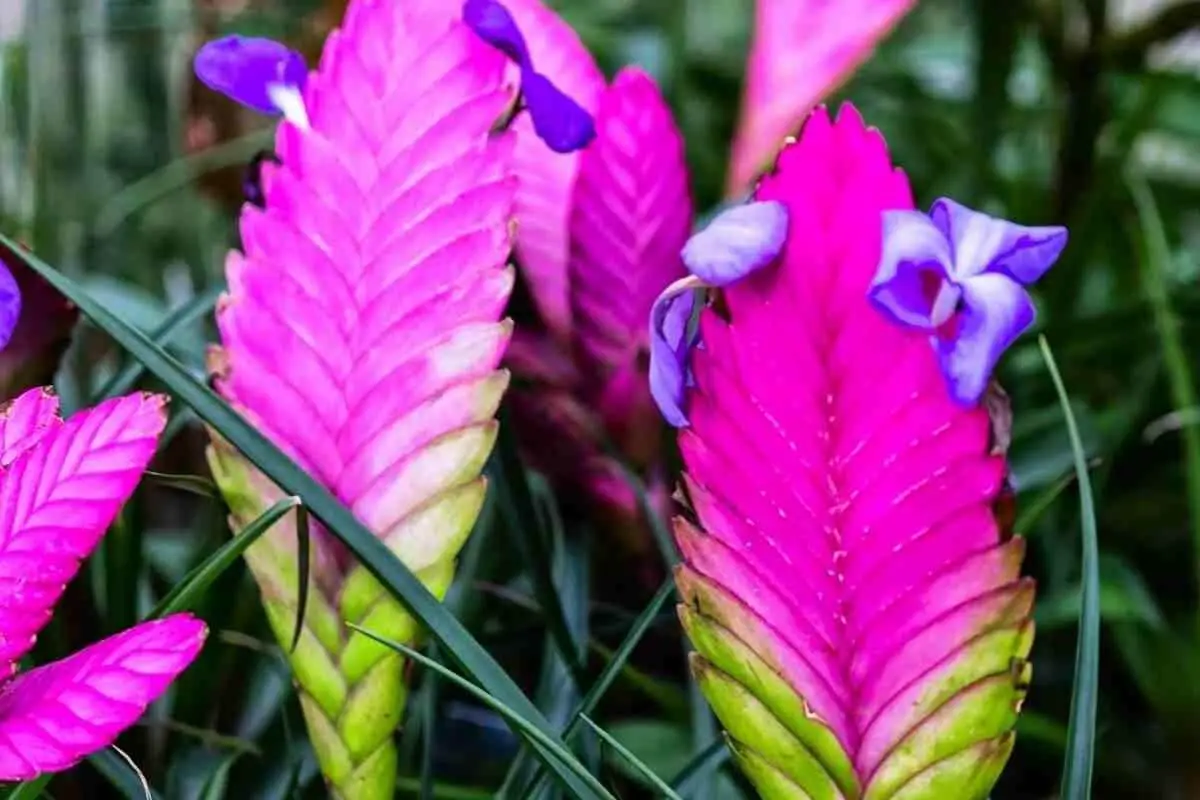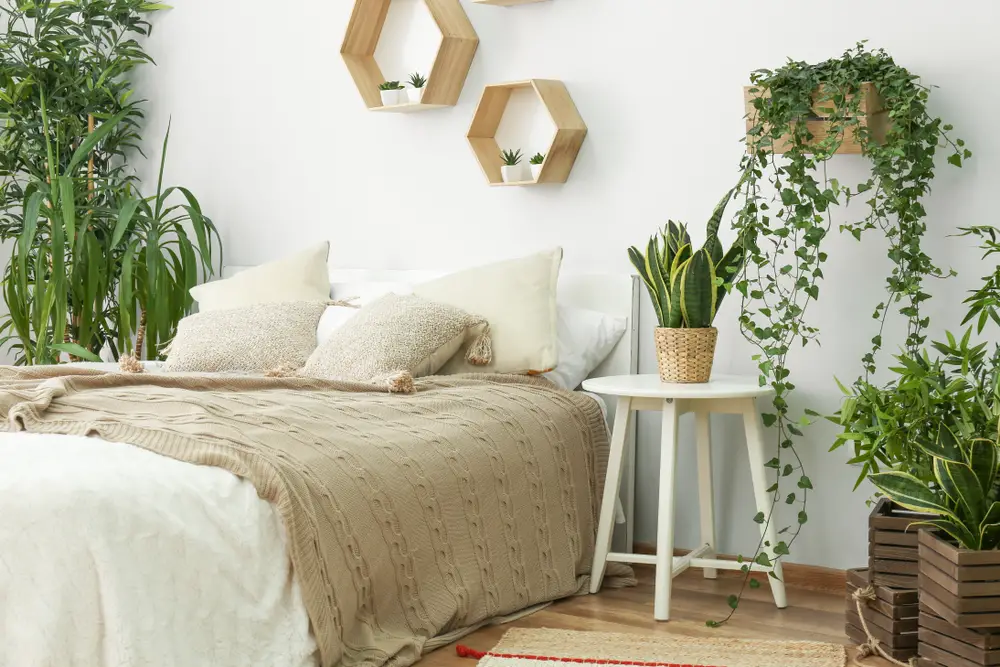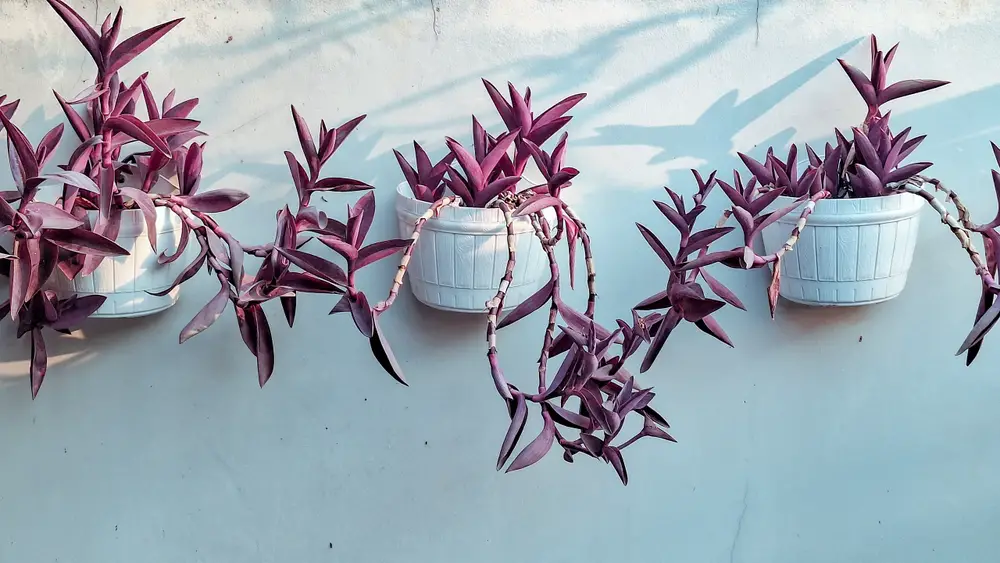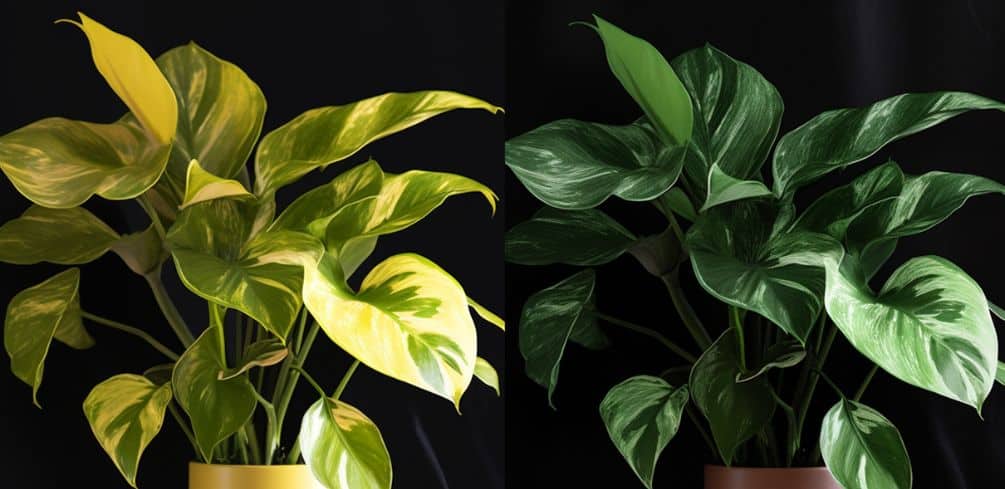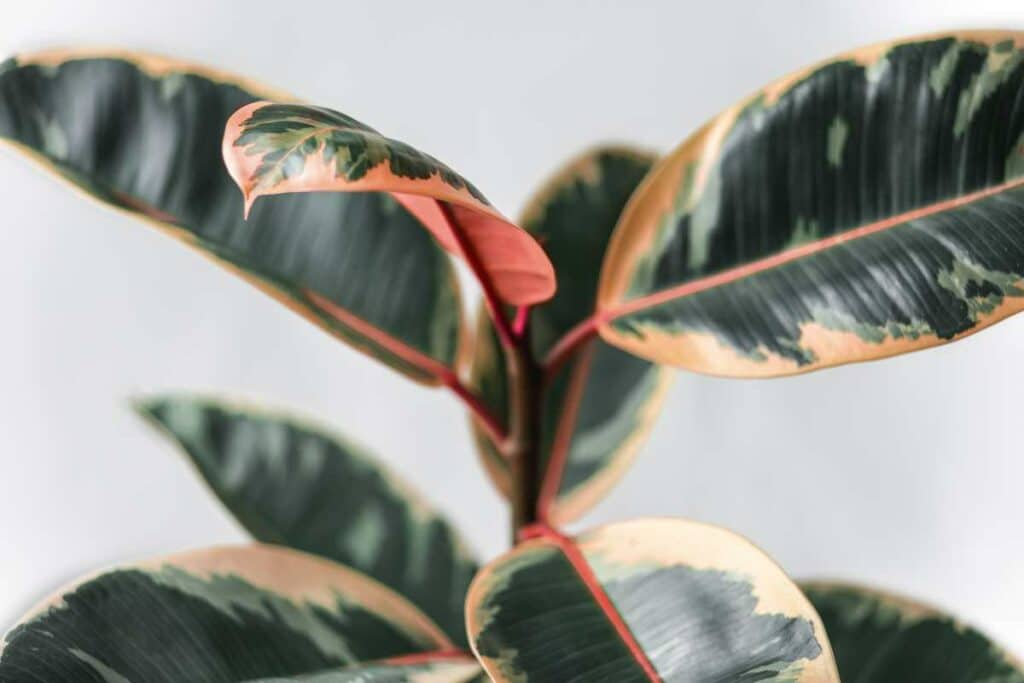A pink quill plant is a beautiful addition to your house plant collection Although it is quite small, the pink quill flower that ascends from the middle and sides is a feature in itself.
They are also relatively low maintenance as well.
The plant is well-known as a pink quill plant given the flower at the center of it, that strongly resembled a quill-like feather.
The color of the flower is a beautiful light pink, which makes it popular among house plants enthusiasts.
Pink quills make the perfect house plant if you are someone who is out of the house a lot and can’t afford to spend ages tending to their plants.
They do well in dry conditions and show toughness through changes in the season.
What to Expect: This guide will teach you how to care for your pink quill plant so that you get the most out of the stunning flower. This step-by-step complete guide will have your pink quill thriving in your home!
Where Do Pink Quill Plants Come From
The pink quill plant is formally known as Tillandsia Cyanea.
The plant originates from the tropics of South America in Ecuador. People also refer to the pink quill plant as the fan flower, given that the flower is flat and two-dimensional.
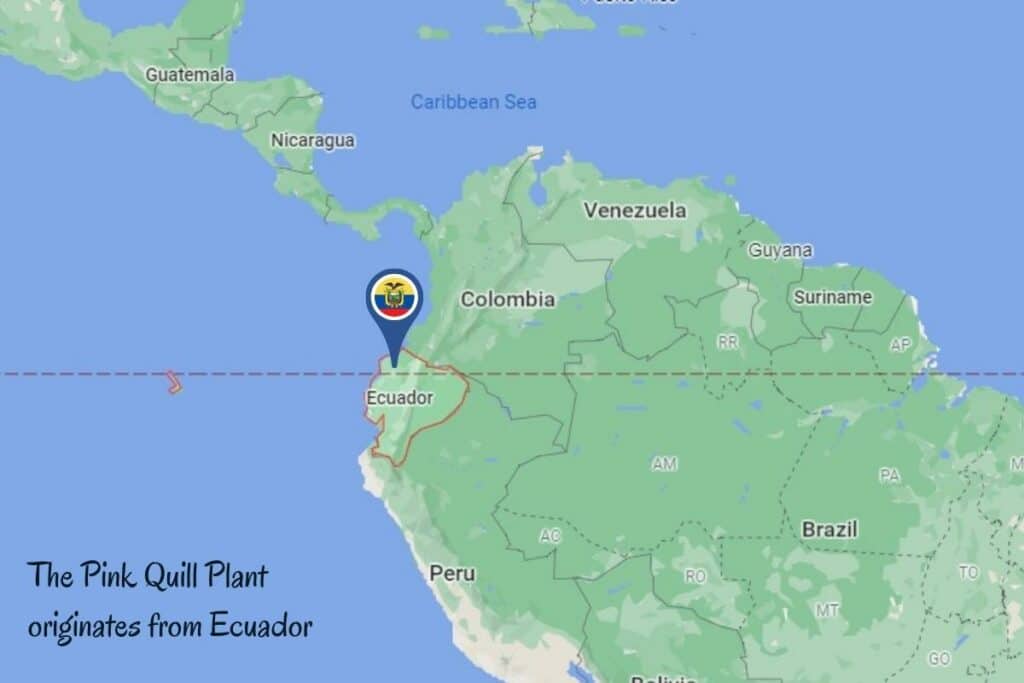
Most commonly though, the plant is known as a pink quill plant given that the flower strongly resembles a quill pen. The flower looks like the feather on the end of the ink pen.
The color of the plant is a light pastel pink, hence why it was given the common name – a pink quill plant.
The plants have small roots which they use to attach themselves to trees in their natural habitat. They therefore also do quite well as air plants.
Their roots do not soak up water, but rather gather moisture and nutrients through their leaves.
General Pink Quill Care Guide
Pink quill plants are easy to maintain as they prefer dry conditions, and are hardy plants throughout the change of season.
There are, however, some basic care principles to follow so that you get the most out of your flowering pink quill plant.
We’ll look at these here.
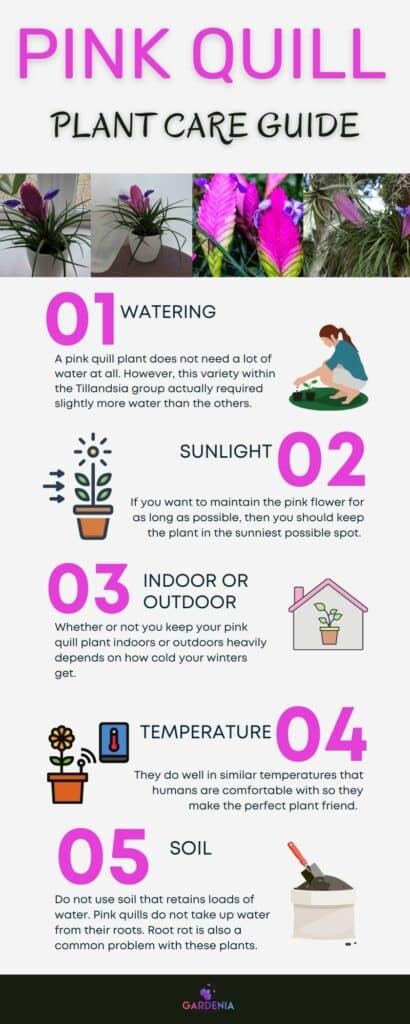
How to Water Pink Quill
A pink quill plant does not need a lot of water at all.
However, this variety within the Tillandsia group actually required slightly more water than the others.
Do not be fooled, the amount of water they require is still not extensive.
If the weather is hot, you should water your pink quill plant slightly every two weeks.
If there is excess water you need to drain this as soon as possible, especially if you have the plant sat in soil.
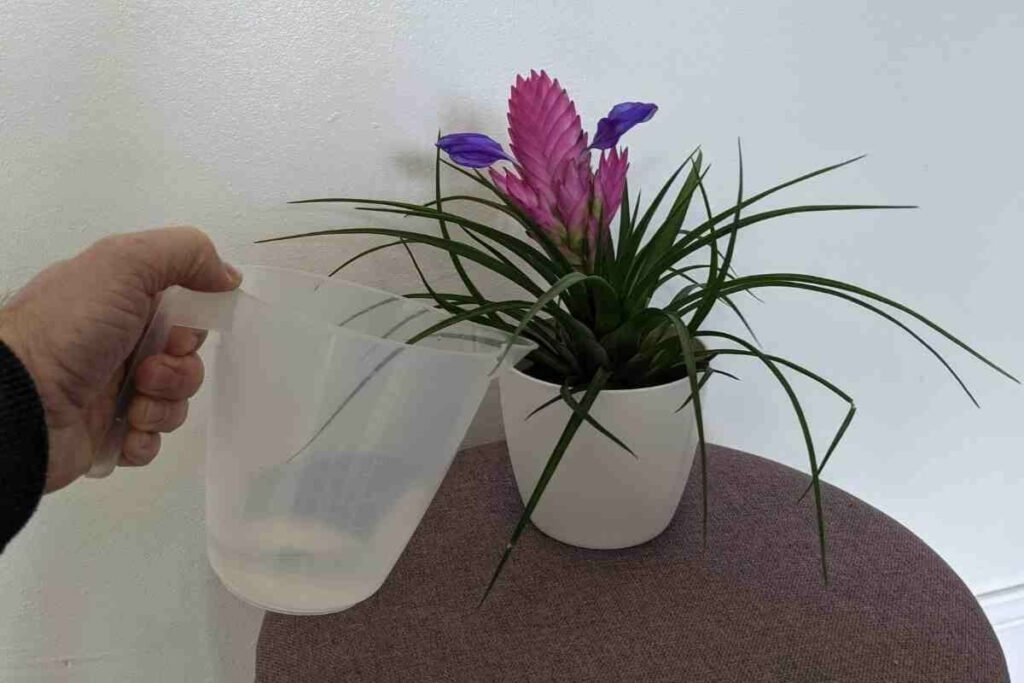
Some experts also recommend that pink quill plant-owners only lightly mist their plants once every week.
But again, only in the hotter months. When the weather cools down, you should only water the plant as little as possible.
Remember This: In cooler, winter months, you can get away with lightly misting your pink quill plant once every three weeks. You need to take care not to overwater the plant as root rot often causes health issues for pink quills.
Sunlight
If you want to maintain the pink flower for as long as possible, then you should keep the plant in the sunniest possible spot.
If you find that your pink quill plant is not flowering, it’s a sign they’re not getting enough sunlight.
Placing your pink quill plant in a window where the sun rises or sets would be the best place to keep the plant.
Alternatively, if there is a spot in your house that gets plenty of sunlight for the whole day, a pink quill plant will thrive there too.
Make sure you don’t place the plant in direct sunlight. The plant is usually grown in the shad in the wild. So
Indoor or Outdoor
Whether or not you keep your pink quill plant indoors or outdoors heavily depends on how cold your winters get.
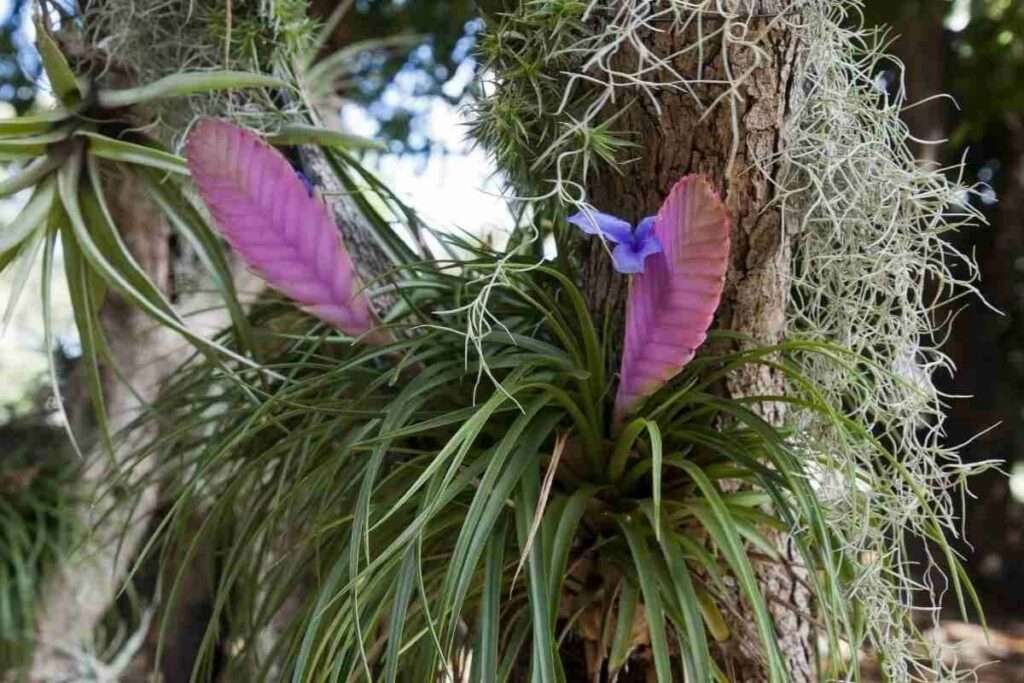
If you live in an area that experiences heavy rainfall then you should not keep your pink quill outdoors.
Pink quills do very well indoors as the environment is generally dry and warm.
They are also ideal to keep indoors as they do not require heavy watering, therefore the risk of mess is minimal.
They are also beautiful features and will bring some lovely greenery to your indoor space.
Temperature
Pink quills should not be in temperatures that drop below four degrees celsius (4℃).
As they are used to the warm humid climates of South America, maintaining a similar environment will benefit your pink quill plant greatly.
Really, you should keep your pink quill plant in an environment that has a consistent temperature of around 23℃. For this reason, it’s best to keep them indoors.
They do well in similar temperatures that humans are comfortable with so they make the perfect plant friend.
What Soil Is Best
Pink quill plants grow by attaching themselves to trees in the wild.
They do not naturally grow in soil. Their roots are very small and fragile. If you want to keep them in a pot or container, they will do well with soil that is light and can easily drain.
Do not use soil that retains loads of water. Pink quills do not take up water from their roots. Root rot is also a common problem with these plants.
Need to Know: They obtain nutrients and moisture from their leaves therefore a dry place to put their roots down is best.
Why Is My Pink Quill Plant Losing Color?
A loss of color in your pink quill plant is a natural part of their life cycle.
There is little you can do to stop the quill part of the plant from losing its color. However, there are certain steps you can take that will prolong the pinkness of the quill.
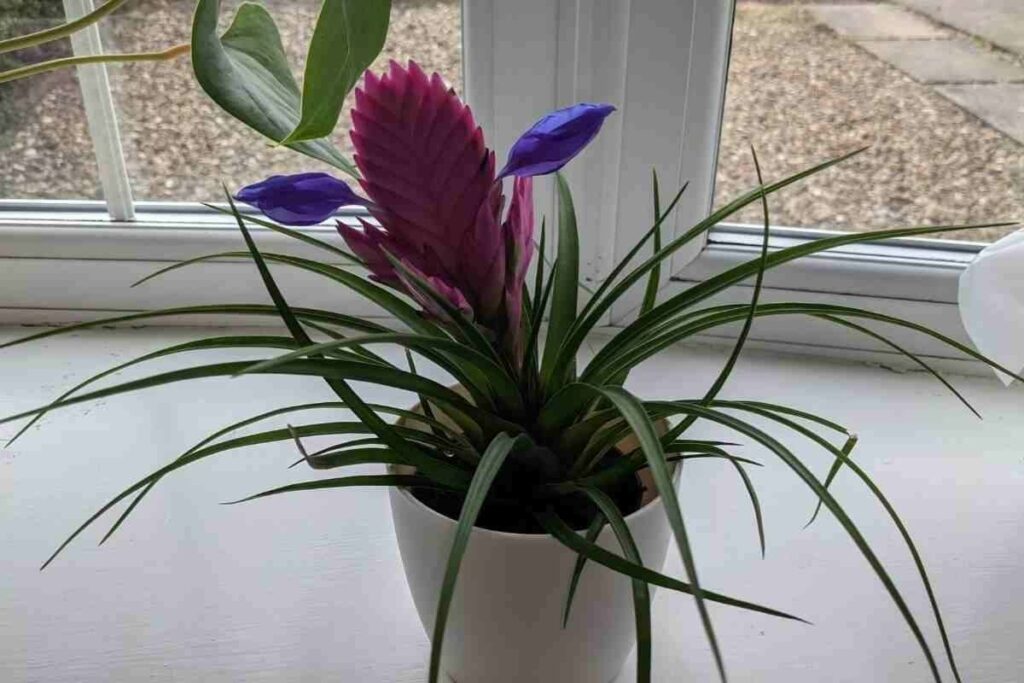
The pink in the plant will typically last a while and then begin to lose color as it ages.
As most people purchase the plant when it has already reached maturity, the aging process can begin quite soon after purchasing or a few months, depending on how far along it was when you got the plant.
If you keep the plant in the sunlight and do not overwater it, the pink quill will last much longer.
Maintaining the right conditions and general care will also prolong the aging process.
When Do Pink Quill Plants Flower?
Pink quills will flower in the warmer summer months.
This is why it is best to keep them in a very sunny, warm spot in the house.
Although it looks stunning, the pink quill that emerges from the center of the leaves is actually not the flower itself.
Just before the pinkness fades, the quill will produce two purple flowers on either side of the quill.
How Long Do Pink Quill Flowers Last?
If you keep your pink quill plant in its ideal conditions, the central pink quill can last up to 4 months before it starts to lose its color.
The actual purple flowers that grow on either side of the pink quill once it has reached maturity only last one day.
Can You Trim The Leaves of a Hawaiian Pink Quill Plant?
The leaves of a pink quill plant are the source of the plant’s moisture and nutrients.
As pink quills do not have big roots, they rely on their leaves to absorb sunlight and water. While they do not require a lot of water, they thrive in sunlight.
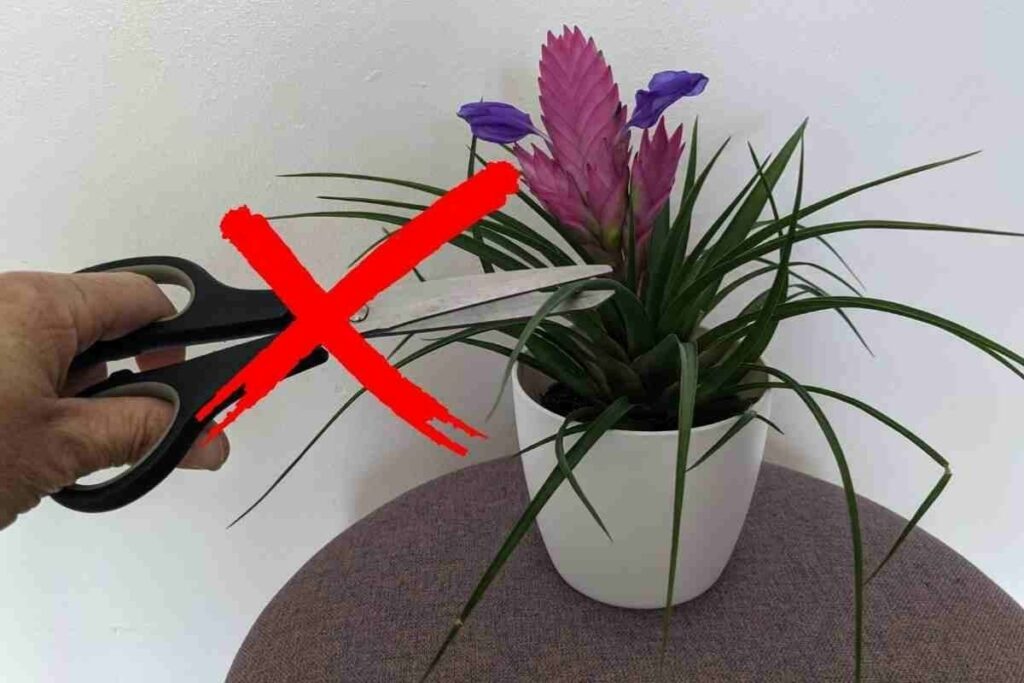
We would advise pink quill plant-owners against trimming the leaves of the plant, especially if they want to maintain the pink quill for as long as possible.
Avoid This: Pink quills thrive in sunny conditions and flower when they are happy. As the leaves are a source of sunlight, trimming them may hinder flowering.
When To Remove Your Pink Quill’s Flowers
When the pink quill begins to fade, it will produce two purple flowers.
These generally only last a day but they are a sign that the pink quill plant has reached full maturity in its life cycle.
Once the purple flowers have wilted and died, you’ll be able to remove the faded pink quill within a few weeks.
If you want to propagate the plant, removing the faded quill will make way for the new puds, known as pups.
You’ll be able to grow these at different times so that there is always a pink quill insight.
How Many Times a Year Do Pink Quills Flower?
Pink quills will bloom when they reach full maturity. This usually takes 2 – 3 years.
They then produce offsets, known as pups, which you will be able to remove and propagate to produce more plants.
Once the pink quill has died, do not give up on the plant!
Maintain the remaining leaves of the pant in the same conditions.
Use the same amount of water, keep it in the same amount of sunlight and make sure the temperature stays the same too.
Why Is My Pink Quill Turning Green?
As pink quills begging to fade in color, once they have reached the end of their lifecycle, the first color they start to turn is green.
It’s a natural part of the aging process and does not mean you did anything wrong in caring for the plant.
In fact, this is a sign of a healthy plant that feels it can reproduce.
Even Better: Once the pink quill has gone from pink to green to brown, you’ll be able to remove it to clear a growth path for the pups. You’ll be able to start new plants using the pups, giving you more plants!
How to Propagate Pink Quills
Wait until the pink quill of the plant begins to die.
There will be a pup at the base of the plant that begins to form in a similar location to the dying pink quill.
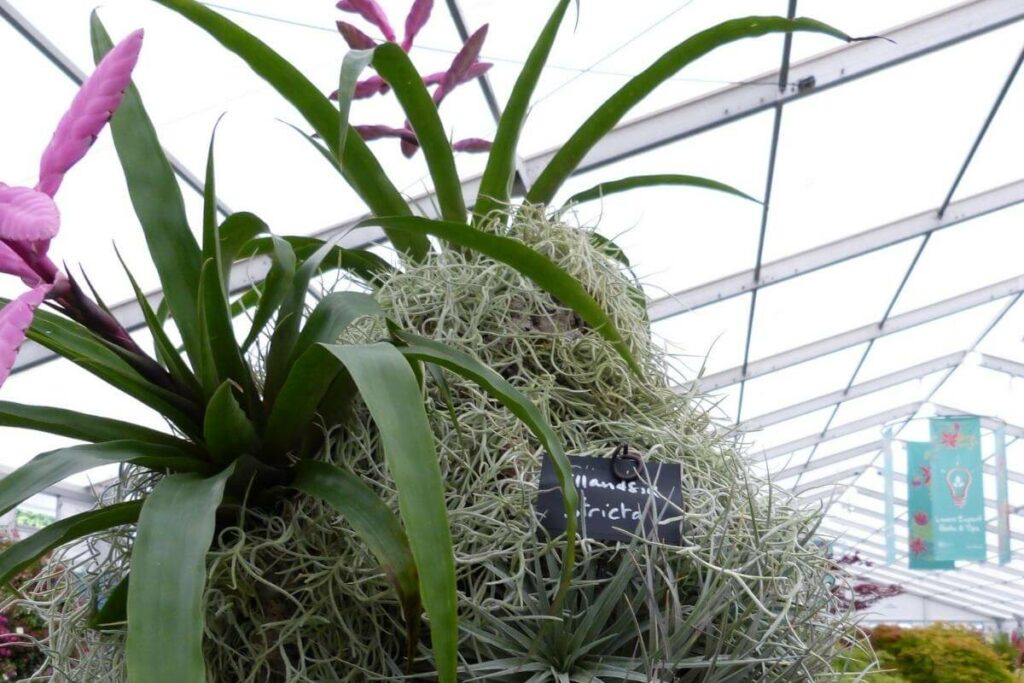
You have two options when it comes to propagating your pink quill plant, you can either remove the baby from the base of the plant or the dying quill.
- If you choose to remove the baby, you will have to re-pot it. If you choose to put your pink quill plants in soil, make sure you are very careful with the roots. You can also mount the new pup on a hanging surface around the house. As the plants also do well as air plants, they’ll do just fine. If you mount them as air plants, mist them occasionally so that they maintain some moisture.
- Your second option is to remove the dying quill and discard it, which will make way for the new pup to grow.
If you maintain healthy conditions for your pink quill plant. You should have another pink quill within the following year.
Conclusion
Caring for your pink quill plant is easy.
It’s very low maintenance, therefore, does not requires extensive watering.
If you keep your pink quill plant in good growing conditions, you’ll be rewarded with a gorgeous house plant.
If you make a habit of propagating your pink quill plant, you’ll be able to enjoy the unique pink quill all year round.
You can make sure the different plants flower at different times of the year.
You May Also Like
- Areca Palm Drooping – Here’s What To Do
- Your Complete Guide to Growing Jade Plants
- Why Are My Peace Lily Flowers Turning Black or Brown?
- Philodendron Care, Varieties, And Aesthetic Home Arrangements
- Best House Plants for Low Light – Thriving Indoors with Minimal Sunlight
- 15 Air-Purifying Houseplants That Release The Most Oxygen
- Purple Houseplants: Your Guide to Dramatic Indoor Beauty
- Philodendron Moonlight Vs. Golden Goddess
- How to Revive Your Rubber Plant: 6 Tips to Help Your Rubber Tree Thrive Again
